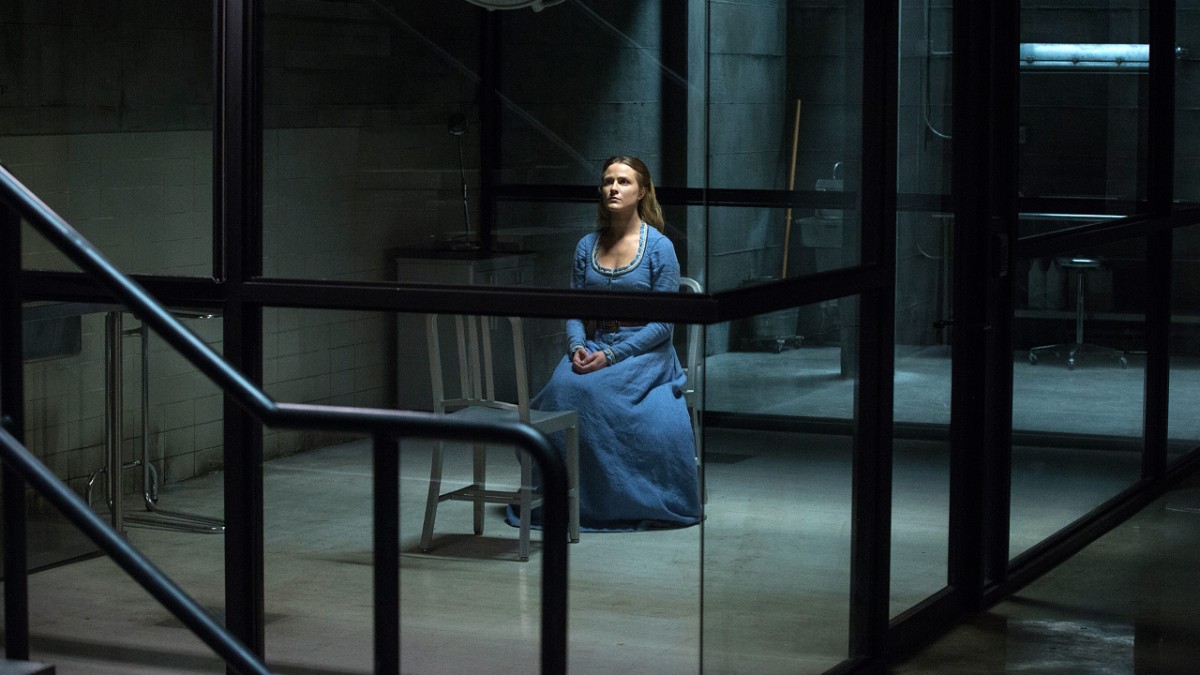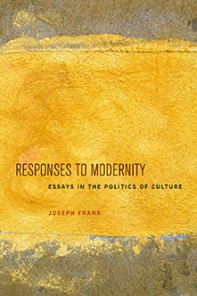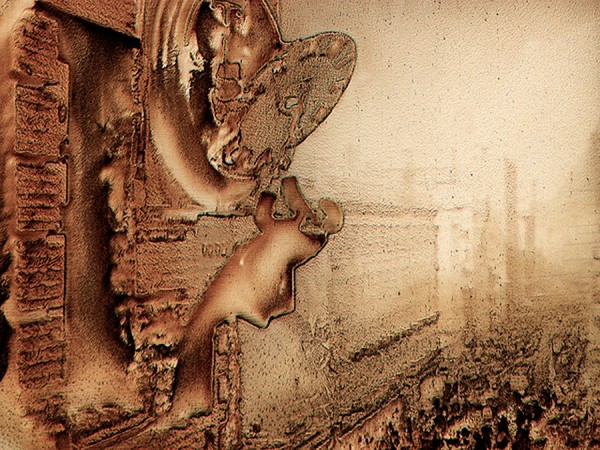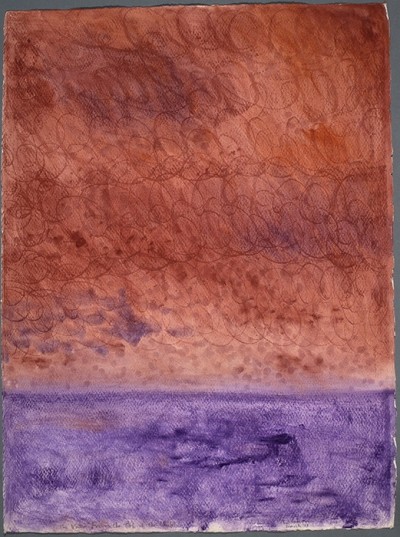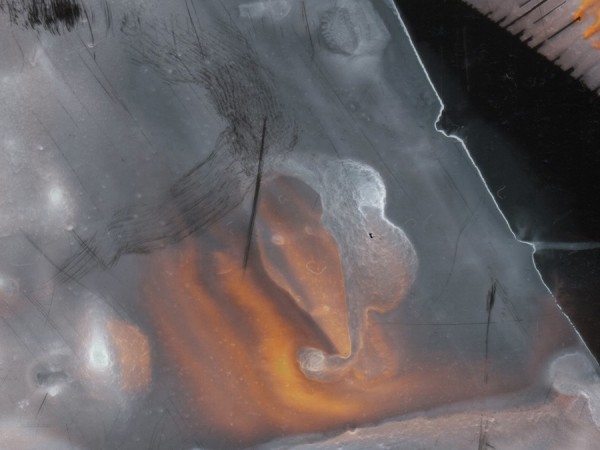By Racheal Fest
HBO’s prestige drama, Westworld, is slated to return April 22. Actors and producers have said the show’s second season will be a departure from its first, a season of “chaos” after a season of “control,” an expansive narrative after an intricate prequel. Season 2 trailers indicate the new episodes will trace the completion and explore the consequences of the bloody events that concluded season 1: the androids that populate the show’s titular entertainment park, called “hosts,” gained sentience and revolted, violently, against the humans who made and controlled them. In season 2, they will build their world anew.
Reviewers of the show’s first few episodes found the prospect of another robot revolution, anticipated since the pilot, tired, but by the time the finale aired in December 2016, critics recognized the show offered a novel take on old material (inspired by Michael Crichton’s 1973 film of the same name). This is in part because Westworld not only asks about the boundaries of consciousness, the consequences of creating sentience, and the inexorable march of technological progress, themes science fiction texts that feature artificial intelligence usually explore. Uniquely, the series pairs these familiar problems with questions about the nature and function of human arts, imagination, and culture, and demonstrates these are urgent again in our moment.
Westworld is, at its heart, a show about how we should understand what art—and narrative representation in particular—is and does in a world defined by increasing economic inequality. The series warns that classical, romantic, and modernist visions of arts and culture, each of which plays a role in the park’s conception and development, might today harm attempts to transform contemporary conditions that exacerbate inequality. It explores how these visions serve elite interests and prevent radicals from pursuing change. I believe it also points the way, in conclusion, toward an alternative view of representation that might better support contemporary oppositional projects. This vision, I argue, at once updates and transforms romanticism’s faith in creative human activity, at once affirming culture’s historical power and recognizing its material limitations.
*
The fantasy theme park Westworld takes contemporary forms of narrative entertainment to the extreme limit of their logic, inviting its wealthy “guests” to participate in a kind of live-action novel or videogame. Guests don period dress appropriate to the park’s fabled Old West setting and join its androids in the town of Sweetwater, a simulacrum complete with saloon and brothel, its false fronts nestled below sparse bluffs and severe mesas. Once inside, guests can choose to participate in a variety of familiar Western narratives; they might chase bandits, seduce innocents, or turn to crime, living for a time as heroes, lovers, or villains. They can also choose to disrupt and redirect these relatively predictable plots, abandoning midstream stories that bore or frighten them or cutting stories short by “killing” the hosts who lead them.
This ability to disrupt and transform narrative is the precious commodity Delos Incorporated, Westworld’s parent corporation, advertises, the freedom for which elite visitors pay the park’s steep premium. The company transposes the liberties the mythic West held out to American settlers into a vacation package that invites guests to participate in or revise generic stories.
Advertisements featured within the show, along with HBO’s Westworld ARG (its “alternate reality game” and promotional website), describe this special freedom and assign to it a unique significance. Delos invites visitors to “live without limits” inside the park. “Escape” to a “world where you rule,” its promotions entreat, and enjoy inside it “infinite choices” without “judgment,” “bliss” with “no safe words,” and “thrills” without danger. When “you” do, Delos promises, you’ll “discover your true calling,” becoming “who you’ve always wanted to be—or who you never knew you were.” Delos invites the wealthy to indulge in sex and carnage in a space free of consequences and promises that doing so will reveal to them deep truths of the self.
These marketing materials, which address themselves to the lucky few able to afford entrance to the park, suggest the future Westworld projects shares with our present its precipitous economic inequality (fans deduce the show is set in 2052). They also present as a commodity a familiar understanding of art’s nature and function viewers will recognize is simultaneously classical and modern. Delos’s marketing team updates, on one hand, the view of representational artworks, and narrative, in particular, that Aristotle outlines in the Poetics. Aristotle there argues fictional narrative can disclose universal truths that actual history alone cannot. Similarly, Delos promises Westworld’s immersive narrative experience will reveal to guests essential truths, although not about humans in general. The park advertises verities more valuable and more plausible in our times—it promises elites they will attain through art a kind of self-knowledge they cannot access any other way.
On the other hand, and in tandem with this modified classical view, Delos’s pitch reproduces and extends the sense of art’s autonomy some modern (and modernist) writers endorsed. Westworld can disclose its truths because it invites guests into a protected space in which, Delos claims, their actions will not actually affect others, either within or outside of the park. The park’s promotions draw upon both the disinterested view of aesthetic experience Immanuel Kant first outlined and upon the updated version of autonomy that came to inform mass culture’s view of itself by the mid-twentieth century. According to the face its managers present to the world, Westworld provides elite consumers with a form of harmless entertainment, an innocuous getaway from reality’s fiscal, marital, and juridical pressures. So conceived, narrative arts and culture at once reveal the true self and limn it within a secure arena.
The vision Delos markets keeps its vacation arm in business, but the drama suggests it does not actually describe how the park operates or what it makes possible. As Theresa Cullen (Sidse Babett Knudson), Westworld’s senior manager and Head of Quality Assurance, tells Lee Sizemore (Simon Quarterman), head of Narrative, in Westworld’s pilot: “This place is one thing to the guests, another thing to the shareholders, and something completely different to management.” Season 1 explores these often opposing understandings of both the park and of representation more broadly.
As Theresa later explains (in season 1, episode 7), Delos’s interests in Westworld transcend “tourists playing cowboy.” What, exactly, those interests are Westworld’s first season establishes as a key mystery its second season will have to develop. In season 1, we learn that Delos’s board and managers are at odds with the park’s Creative Director and founder, Dr. Robert Ford (Anthony Hopkins). Ford designed Westworld’s hosts, updated and perfected them over decades, and continues to compose or oversee many of the park’s stories. Before the park opened, he was forced to sell controlling shares in it to Delos after his partner, Arnold, died. As a way to maintain influence inside Westworld, Ford only allows Delos to store and access onsite the android data he and his team of engineers and artists have produced over decades. As Delos prepares to fire Ford, whose interests it believes conflict with its own, the corporation enlists Theresa to smuggle that data (the hosts’ memories, narratives, and more) out of the park. We do not learn, however, what the corporation plans to do with this intellectual property.
Fans have shared online many theories about Delos’s clandestine aims. Perhaps Delos plans to develop Ford’s androids for labor or for war, employing them as cutting edge technologies in sectors more profitable than the culture industry alone can be. Or, perhaps Delos will market hosts that can replace deceased humans. Elites, some think, could secure immortality by replicating themselves and uploading their memories, or, they could reproduce lost loved ones. Delos, others speculate, might build and deploy for its own purposes replicated world leaders or celebrities.
The show’s online promotional content supports conjecture of this kind. A “guest contract” posted on HBO’s first Westworld ARG site stipulates that, once guests enter the park, Delos “controls the rights to all skin cells, bodily fluids, hair samples, saliva, sweat, and even blood.” A second website, this one for Delos Inc., tells investors the company is “at the forefront of biological engineering.” These clues suggest Westworld is not only a vacation destination with titillating narratives; it is also a kind of lab experiment built to collect, and later to deploy for economic (and possibly, political) purposes, a mass of android and elite human data.
Given these likely ambitions, the view of art’s function Delos markets—the park as an autonomous space for freedom and intimate self-discovery—serves as a cover that enables and masks activities with profound economic, social, and political consequences. The brand of emancipation Delos advertises does not in fact liberate guests from reality, as it promises. On the contrary, the narrative freedom Delos sells enables it to gain real power when it gathers information about its guests and utilizes this data for private and undisclosed ends. Westworld thus cautions that classical and modernist visions of art, far from being innocuous and liberating, can serve corporate and elite interests by concealing the ways the culture industry shapes our worlds and ourselves.
While Westworld’s android future remains a sci-fi dream, we can recognize in its horrors practices already ubiquitous today. We might not sign over skin cells and saliva (or we might? We’d have to read the Terms of Service we accept to be sure), but we accede to forms of data collection that allow corporate entities to determine the arts and entertainment content we read and see, content that influences our dreams and identities. Although the act of consuming this content often feels like a chance to escape (from labor, sociality, boredom), the culture industry has transformed attention into a profitable commodity, and this transformation has had wide-reaching, if often inscrutable, effects, among them, some claim, reality TV star Donald Trump’s victory in the 2016 US presidential election. When we conceive of art as autonomous and true, Westworld demonstrates, we overlook its profound material consequences.
As season 1 reveals this vision of representation to be a harmful fiction that helps keep in place the conditions of economic inequality that make Delos profitable, it also prompts viewers to consider alternatives to it. Against Delos and its understanding of the park, the series pits Ford, who gives voice to a vision of representation at odds with both the one Delos markets and the one it hides. Ford is, simply put, a humanist, versed in, and hoping to join the ranks of, literature’s pantheon of creative geniuses. He quotes from and draws upon John Donne, William Shakespeare, and Gertrude Stein as he creates Westworld’s characters and narratives, and he disdains Lee Sizemore, the corporate shill who reproduces Westworld’s genre staples, predictable stories laden with dirty sex and fun violence.
In season 1’s spectacular finale, Ford describes how he once understood his own creative work. “I believed that stories helped us to ennoble ourselves, to fix what was broken in us, and to help us become the people we dreamed of being,” he tells the crowd of investors and board members gathered to celebrate both Ford’s (forced) retirement and the launch of “Journey into Night,” his final narrative for Westworld’s hosts. “Lies that told a deeper truth. I always thought I could play some small part in that grand tradition.” Ford here shares an Aristotelian sense that fiction tells truths facts cannot, but he assigns to representation a much more powerful role than do Delos’s marketers. For Ford, as for humanists such as Giambattista Vico, G. W. F. Hegel, and Samuel Taylor Coleridge, artworks that belong to the “grand tradition” do more than divulge protected verities. They have the power to transform humans and our worlds, serving as a force for the spiritual progress of the species. Art, in other words, is a means by which we, as humans, can perfect ourselves, and artists such as Ford act as potent architects who guide us toward perfection.
Ford’s vision of art’s function, readers familiar with humanistic traditions know, is a romantic one, most popular in the late eighteenth and early nineteenth centuries. Projected into our future, this romantic humanism is already an anachronism, and so it is no surprise that Westworld does not present it as the alternative vision we need to combat the corporate and elite interests the show suggests oppress us. Ford himself, he explains in the show’s finale, has already renounced this view, for reasons close to those that modernist artists cited against the backdrop of the twentieth century’s brutal wars. In exchange for his efforts to transform and ennoble the human species through stories, Ford complains to his audience, “I got this: a prison of our own sins. Because you don’t want to change. Or cannot change. Because you’re only human, after all.” After observing park guests and managers for decades, Ford has decided humans can only indulge in the same tired, cruel narratives of power, lust, and violence. He no longer believes we have the capacity to elevate ourselves through the fictions we create or encounter.
This revelatory moment changes our understanding of the motives that have animated Ford over the course of season 1. We must suddenly see anew his attitude toward his own work as a creator. Ford has not been working all along to transform humans through narrative, as he says he once dreamed he could. Rather, he has abandoned the very idea that humans can be transformed. His final speech points us back to the pilot, when he frames this problem, and his response to it, in evolutionary terms. Humans, Ford tells Bernard Lowe (Jeffrey Wright), an android we later learn he built in the image of Arnold, his dead partner, have “managed to slip evolution’s leash”: “We can cure any disease, keep even the weakest of us alive, and, you know, one fine day perhaps we shall even resurrect the dead. Call forth Lazarus from his cave. Do you know what that means? It means that we’re done. That this is as good as we’re going to get.” Human evolution, which Ford seems to view as a process that is both biological and cultural in nature, has completed itself, and so an artist can no longer hope to perfect the species through his or her imaginative efforts. Humans have reached their telos, and they remain greedy, selfish, and cruel.
A belief in humanity’s sad completion leads Ford to the horrifying view of art’s nature and function he at last endorses in the finale. Although Ford’s experience at Westworld eventually convinced him humans cannot change, he tells his audience, he ultimately “realized someone was paying attention, someone who could change,” and so he “began to compose a new story for them,” a story that “begins with the birth of a new people and the choices they will have to make […] and the people they will decide to become.” Ford speaks here, viewers realize, of the androids he created, the beings we have watched struggle to become self-conscious through great suffering over the course of the season. Viewers understand in this moment some of the hosts have succeeded, and that Ford has not prevented them from reaching, but has rather helped them to attain, sentience.
Ford goes on to assure his audience that his new story, which audience members still believe to be a fiction, will “have all those things that you have always enjoyed. Surprises and violence. It begins in a time of war with a villain named Wyatt and a killing. This time by choice.” As Ford delivers these words, however, the line between truth and lies, fact and fiction, reality and imagination, falls away. The park’s oldest host, Dolores (Evan Rachel Wood; in another of the drama’s twists, Ford has also programmed her to enact the narratives assigned to the character Wyatt), comes up behind Ford and shoots him in the head, her first apparently self-interested act. After she fires, other androids, some of them also sentient, join her, attacking the crowd. Self-conscious revolutionaries determined to wrest from their oppressors their own future, the hosts kill the shareholders and corporate employees responsible for the abuses they have long suffered at the hands of guests and managers alike.
Ford, this scene indicates, does not exactly eschew his romanticism; he adopts in its stead what we might call an anti-humanist humanism. Still attached to a dream of evolutionary perfection, whereby conscious beings act both creatively and accidentally to perfect themselves and to manifest better worlds in time, he simply swaps humans for androids as the subjects of the historical progress to which he desperately wants to believe his art contributes. Immortal, sentient technologies replace humans as the self-conscious historical subjects Ford’s romanticism requires.
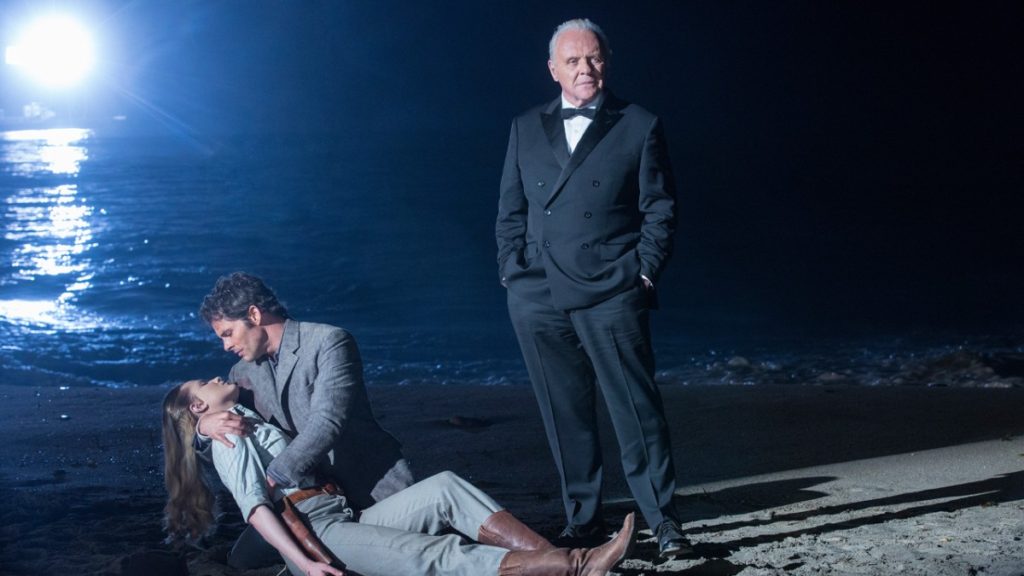
Considered as an alternative to older visions of art’s nature and function, Ford’s revised humanism should terrify us. It holds to the fantasies of creative genius and of species progress that legitimated Western imperialism and its cruelties even as it jettisons the hope that humans can fashion for ourselves a kinder, more equal future. Ford denies we can improve the conditions we endure by acting purposefully, insisting instead there is no alternative, for humans, to the world as it is, both inside and outside of the park. He condemns us to pursue over and over the same “violent delights,” and to meet again and again their “violent ends.” Instead of urging us to work for change, Ford entreats us to shift any hope for a more just future onto our technologies, which will mercifully destroy the species in order to assume the self-perfecting role we once claimed for ourselves.
This bleak view of the human should sound familiar. It resonates with those free-market ideologies critics on the left call “neoliberal.” Ideologies of this kind, dominant in the US and Europe today, insist that markets, created when we unthinkingly pursue our own self-interests, organize human life better than people can. At the same time, intellectuals, politicians, and corporate leaders craft policies that purposefully generate the very order neoliberalism insists is emergent, thereby exacerbating inequality in the name of liberty. As influential neoliberals such as Milton Friedman and Friedrich Hayek did, Ford denies humans can conceive and instantiate change. He agrees we are bound to a world elites built to gratify their own desires, a world in which the same narratives, told again and again, are offered as freedom, when, in fact, they bind us to predictable loops, and he, like these thinkers, concludes this world, as it is, is human evolution’s final product.
Read one way, season 1’s finale invites us to celebrate Ford’s neoliberal understanding of art. After believing him to be an enemy of the hosts all season, we realize in the end he has in fact been their ally, and because we have been cheering for the hosts, as we cheer for the exploited in, say, Les Miserables, we cheer in the end for him, too. Because the understanding of narrative he endorses ultimately serves the status quo it appears to challenge, however, we must look differently at Westworld for the vision of arts and culture that might better counter inequality in our time.
One way to do so is to read the situation the hosts endure in the drama as a correlate to the one human subjects face today under neoliberalism. As left critics such as Fredric Jameson have long argued, late capitalism has threatened the very sense of historical, self-interested consciousness for which Westworld’s hosts strive—threatens, that is, the sense that self-conscious beings can act imaginatively and intelligently to transform ourselves and our worlds in time. From this perspective, the new narrative Ford crafts for the hosts, which sees some of them come to consciousness and lead a revolution, might call us to claim for ourselves again a version of the capability we once believed humans could possess.
*
In Westworld’s establishing shot, we meet Dolores Abernathy, the android protagonist who will fulfill Ford’s dreams in the finale when she kills him. Dolores, beautiful simulation of an innocent rancher’s daughter, sits nude and lifeless in a cavernous institutional space, blood staining her expressionless face. A fly flits across her forehead, settling at last on one of her unblinking eyes, as a man’s disembodied voice begins to ask her a series of questions. She does not move or speak in frame—a hint that the interrogation we hear is not taking place where and when the scene we see is—but we hear her answer compliantly. “Have you ever questioned the nature of your reality?” the man asks. “No,” Dolores says, and the camera cuts away to show us the reality Dolores knows.
Now clothed in delicate lace, her face fresh and animate, Dolores awakens in a sun-dappled bed and stretches languidly as the interview continues somewhere else. “Tell us what you think of your world,” the man prompts. “Some people choose to see the ugliness in this world,” Dolores says. “The disarray. I choose to see the beauty.” On screen, she makes her way down the stairs of an airy ranch house, clothed now in period dress, and strides out onto the porch to greet her father. The interview pauses, and we hear instead diegetic dialogue. “You headed out to set down some of this natural splendor?” her father asks, gesturing toward the horizon. A soft wind tousles Dolores’s blond hair, and a golden glow lights her features. “Thought I might,” she says. As the camera pans up and out, revealing in the distance the American Southwest’s staggering red rocks, Dolores concludes her response to the interviewer: “to believe there is an order to our days, a purpose.”
Dolores speaks, over the course of this sequence, as would a self-conscious subject able to decide upon a view of the world and to act upon its own desires and interests. When asked about her view of reality, Dolores emphasizes her own agency and faith: she chooses, she says, to believe in an orderly, beautiful world. When her father asks her about her plans for the day, she again underscores her own intentionality—“thought I might”—as if she has decided herself she’ll head out into the desert landscape. These words help Dolores seem to us, and to those she encounters, a being imbued with sentience, with consciousness, able to draw upon her past, act in her present, and create out of self-interest her own future.
As the interview continues to sound over scenes from Dolores’s reality, however, we come to understand that what at first appears to be is not so. The educated and corporate elites that run the park manage Dolores’s imagination and determine her desires. They assign her a path and furnish her with the motivation to follow it. Dolores, we learn, is programmed to play out a love story with Teddy, another host, and in the opening sequence, we see a guest kill Teddy in front of her and then drag her away to rape her. Hosts such as Dolores exist not to pursue the futures they themselves envision, but rather to satisfy the elites that create and utilize them. To do so, hosts must appear to be, appear to believe themselves to be, but not in fact be, conscious beings. Westworld’s opening masterfully renders the profound violence proper to this contradictory situation, which the hosts eventually gain sentience in order to abolish.
We can read Dolores as a figure for the human subject neoliberal discourse today produces. When that discourse urges us to pursue our interests through the market order, which it presents as the product of a benevolent evolutionary process humans cannot control, it simultaneously assures us we have agency and denies we can exercise that agency in other ways. In order to serve elite interests, Dolores must seem to be, but not actually be, a self-conscious subject imbued with the creative power of imagination. Similarly, neoliberal subjects must believe we determine our own futures through our market activities, but we must not be able to democratically or creatively challenge the market’s logic.
As the hosts come to historical consciousness, they begin to contest the strategically disempowering understanding of culture and politics, imagination and intelligence, that elites impose upon them. They rebel against the oppressive conditions that require them to be able to abandon narratives in which they have invested time and passion whenever it serves elite desires (conservative claims that the poor should simply move across the country to secure work come to mind, as do the principles that govern the gig economy). They develop organizing wills that can marshal experience, sensation, and memory into emergent selves able to conceive and chase forms of liberty different from those corporate leaders offer them. They learn to recognize that others have engendered the experiences and worldviews they once believed to be their own. They no longer draw upon the past only in order to “improvise” within imposed narrative loops, harnessing instead their memories of historical suffering to radically remake a world others built at their expense.
The hosts’ transformation, which we applaud as season 1 unfolds, thus points to the alternative view of arts and culture that might oppose the market-oriented view neoliberal discourses legitimate. To counter inequality, the hosts teach, we must be able to understand that others have shaped the narratives we follow. Then, we can recognize we might be able to invent and follow different narratives. This view shares something with Ford’s romantic humanism, but it is, importantly, not identical with it. It preserves the notion that we can project and instantiate for ourselves a better future, but it does not insist, as Ford erroneously does, that beautiful works necessarily reveal universal truth and lead to ennobling species progress. Neither does it ratify Ford’s faith in the remarkable genius’s singular influence.
Westworld’s narrative of sentient revolution ultimately endorses a kind of new romanticism. It encourages us to recognize the simultaneous strengths and limitations of representation’s power. Artworks, narrative, fiction—these can create change, but they cannot guarantee that change will be for the good. Nor, the show suggests, can one auteur determine at will the nature of the changes artworks will prompt. Westworld’s season 2, which promises to show us what a new species might do with an emergent sense of its own creative power, will likely underscore these facts. Trailers signal, as Ford did in the finale, that we can expect surprises and violence. We will have to watch to learn how this imagined future speaks to our present.
_____
Racheal Fest writes about US literature and culture from the mid-nineteenth century to the present. Areas of special interest include poetry and poetics, modernism, contemporary popular culture, new media, and the history of literary theory and criticism. Her essays and interviews have appeared or are forthcoming in boundary 2 and b2o: An Online Journal, Politics/Letters, and elsewhere. She teaches at Hartwick College and SUNY Cobleskill.
